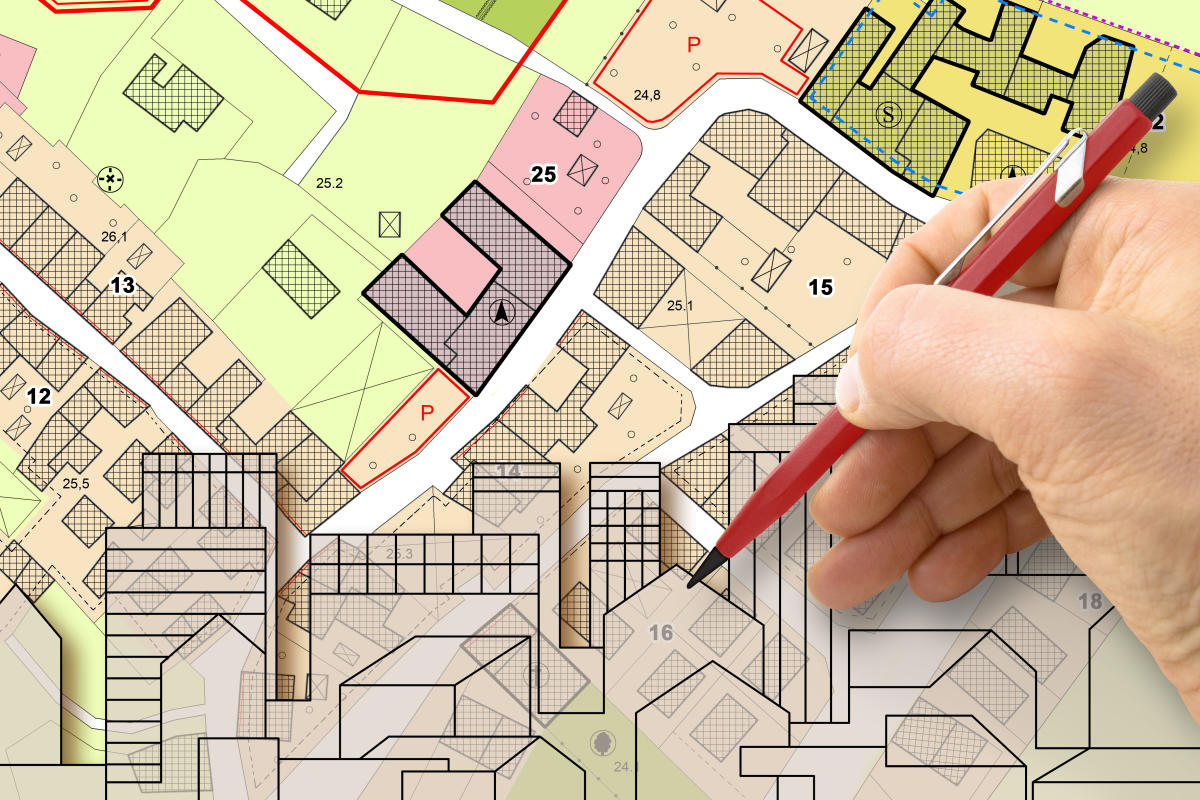The Basics of Land Use Law

Land use law forms the foundation of how our communities are shaped, determining the types of activities and developments that can occur in our neighborhoods. From zoning regulations to special use permits, these legal frameworks play an essential role in balancing the interests of property owners, local communities, and overall public welfare. As the United States undergoes continuous urban development and growth, understanding the basics of land use law becomes increasingly important.
The impact of zoning issues and related legal disputes across the United States underscores the significance of this field. Recent statistics reveal a growing number of zoning-related lawsuits, reflecting the complexities and challenges faced by property owners, developers, and local governments. According to a study by the American Planning Association, zoning litigation has been on the rise, with an estimated 45% increase in lawsuits filed between 2003 and 2019.
This article provides a comprehensive guide to the fundamentals of land use law, providing insights into zoning regulations, special use permits, and the broader legal landscape governing land development. By exploring the essential concepts and procedures in land use law, you can understand the legal framework underpinning land use decisions and the potential implications for your own ventures.
How Land Use is Regulated in the United States
Land use regulation is primarily the responsibility of local governments, including cities, counties, and townships. The specific regulations and processes can vary across different jurisdictions, but some common approaches and principles are followed throughout the country.
1. Zoning
Zoning is the most prevalent form of land use regulation. Local governments establish zoning ordinances that divide the land into different zones or districts, such as residential, commercial, agricultural, or mixed-use zones. Each zone has specific regulations regarding the activities allowed, building density, setbacks, lot sizes, and other criteria.
2. Comprehensive Plans
Many local governments create comprehensive plans or master plans that provide long-term guidance for land use and development. These plans outline goals, policies, and strategies for managing growth, preserving open spaces, protecting natural resources, and enhancing the quality of life in the community. Zoning regulations often align with the goals and vision outlined in the comprehensive plan.
3. Land Development Regulations
Apart from zoning, local governments establish land development regulations that govern the details of development processes. These regulations cover building codes, subdivision requirements, site plan reviews, environmental impact assessments, parking standards, signage rules, and other considerations. They provide guidelines for developers to follow when constructing new buildings or changing existing ones.
4. Permitting and Review Process
Local governments typically require permits for various land use activities, such as constructing new buildings, altering structures, subdividing land, or changing the use of a property. Developers must submit applications and plans to the relevant government agencies and undergo a review process to ensure compliance with applicable regulations. The review may involve input from various departments, such as planning, zoning, building, and environmental agencies, and public input through hearings or community meetings.
5. Environmental Regulations
Land use regulations often incorporate environmental considerations to protect natural resources and mitigate potential impacts. This can include rules related to wetlands, floodplains, steep slopes, endangered species habitat, water quality, and other environmental factors. Projects may require ecological assessments or permits to ensure compliance with these regulations.
6. Historic Preservation
Some jurisdictions have regulations to protect and preserve historic buildings, districts, or landmarks. These regulations may impose restrictions on alterations, demolitions, or changes to the exterior appearance of historically significant structures.
Zoning laws
Zoning laws are regulations enacted by local governments to control and manage land use within their jurisdictions. These laws divide the land into different zones or districts, each with rules and restrictions regarding permitted activities.
1. Residential Zones
Residential zones are designated for housing and typically encompass areas where people live. They can further be divided into different subcategories based on density, such as:
Single-Family Residential: This zone allows for the construction of detached, single-family homes on individual lots. It often has specific requirements regarding lot sizes and building height. There may also be setback requirements, which is the distance a home needs to be from the street or a neighbor's property.
Multi-Family Residential: This zone permits the development of multi-unit buildings, such as apartments, townhomes, or condominiums. Density restrictions and building design guidelines may apply.
Mixed Residential: Some areas may be zoned for a mix of single-family and multi-family residences, providing a combination of housing options in one neighborhood.
2. Commercial Zones
Commercial zones are intended for business activities, including retail, offices, services, and entertainment. They are typically located near transportation corridors or in commercial centers. Different subcategories may exist, such as:
Neighborhood Commercial: This zone supports small-scale businesses, such as convenience stores, cafes, and local services — primarily serving nearby residential areas.
General Commercial: This zone accommodates a broader range of commercial activities, including larger retailers, offices, and services.
Central Business District: Found in urban areas, this zone is characterized by high-density commercial development, often with mixed-use buildings that combine commercial spaces with residential units.
3. Industrial Zones
Industrial zones are designated for manufacturing, warehousing, and industrial activities. They are usually located away from residential areas due to their potential impacts. Industrial zones may include the following:
Light Industrial: This zone allows for light manufacturing, assembly, and small-scale industrial activities with limited environmental impact.
Heavy Industrial: Intended for large-scale manufacturing, processing, or industrial operations involving more substantial machinery, potential noise, or environmental emissions.
4. Agricultural Zones
Agricultural zones are primarily reserved for farming, ranging, and agricultural activities. These zones often restrict non-agricultural uses to protect farming operations, preserve open space, and maintain rural character.
5. Mixed-Use Zones
Mixed-use zones combine different land uses within the same area, promoting a mix of residential, commercial, and sometimes industrial or institutional activities. These zones encourage compact, walkable communities that reduce the need for extensive travel.
Traditional Mixed-Use: This type of zone combines residential and commercial uses in close proximity, allowing for a blend of housing, shops, services, and offices.
Transit-Oriented Development (TOD): Near public transportation hubs, TOD zones promote residential and commercial uses to encourage transit use and reduce reliance on private vehicles.
Planned Unit Development (PUD): PUDs are specialized mixed-use zones that offer flexibility in design and land use by allowing developers to create a cohesive, planned community with a combination of residential, commercial, recreational, and open space elements.
Lot size regulations
Lot size regulations are rules set by local governments that specify the minimum or maximum size of lots within a zoning district. These regulations play a crucial role in land use law and zoning regulations for several reasons, including the following:
1. Infrastructure and Services
Lot size regulations help ensure adequate infrastructure and services, such as roads, utilities, and public facilities, can efficiently serve a given area. By controlling lot sizes, local governments can manage the capacity of infrastructure systems and prevent strain on resources. Larger lots may require more extensive infrastructure, while smaller lots may lead to denser development and increased service demand.
2. Density and Character
Lot size regulations help shape the density and character of a neighborhood or community. By setting minimum lot sizes, local governments can promote a certain level of spaciousness and maintain a desired aesthetic or rural character. Conversely, maximum lot sizes may be established to prevent excessively large lots, which could lead to sprawl, inefficient land use, and loss of open space.
3. Housing Affordability
Lot size regulations can impact housing affordability. In areas with minimum lot size requirements, larger lots tend to result in more expensive housing options, as land cost is typically a significant component of housing prices. Smaller lot sizes allow for more compact and affordable housing options, promoting a diversity of housing choices within a community.
4. Environmental Considerations
Lot size regulations may be implemented to address environmental concerns. Larger lot sizes can help protect sensitive natural features, preserve open space, and provide buffering between development and environmentally sensitive areas like wetlands, forests, or water bodies. They can also ensure proper drainage, minimize stormwater runoff, and protect water quality.
5. Compatibility and Land Use Separation
Lot size regulations can help separate incompatible land uses. For instance, larger lot sizes between residential and industrial zones might be required to mitigate noise, odors, or other potential impacts. Separation can also be achieved by creating larger lots within a specific zone to maintain a particular land use pattern or preserve the integrity of agricultural areas.
Urban growth control
Land use laws restrict urban growth and ensure effective urban planning. These laws are typically enacted at the local or regional level and govern how the land can be used within a specific jurisdiction. Here are a few ways in which land use laws can restrict urban growth:
1. Growth Boundaries
Some jurisdictions establish urban growth boundaries (UGBs) to contain urban sprawl and promote more compact development. UGBs restrict the expansion of urban development beyond a defined line, encouraging the efficient use of existing infrastructure and preservation of rural areas. For example, a city might establish a UGB to protect surrounding agricultural land from urban encroachment.
2. Environmental Protections
Land use laws often incorporate environmental considerations to protect natural resources and sensitive ecosystems. These regulations may restrict development in floodplains, wetlands, or areas with endangered species habitats. By doing so, they help preserve biodiversity, mitigate the impact of development on the environment, and maintain ecosystem services.
3. Subdivision Controls
Land use laws can include regulations on the subdivision of land, such as minimum lot sizes or requirements for open space. These controls help manage the pace and pattern of development, preventing haphazard or inefficient land division. For instance, a municipality might require a minimum lot size in rural areas to preserve the agricultural character of the region and prevent excessive fragmentation of land.
Building size regulations
Floor Area Ratio (FAR) regulations are a standard tool used in land use laws to restrict building size and density in different cities and areas across the United States. FAR regulations typically set a maximum ratio between the total floor area of a building and the scope of the lot on which it is located. The aim is to strike a balance between accommodating growth, preserving neighborhood character, and ensuring sustainable development patterns.
New York City
New York City has well-known FAR regulations that influence the size and density of buildings. The FAR can be as high as ten or more in certain zoning districts, such as R10 or C6, allowing for significant development intensity. However, in residential communities, FARs are often lower, typically ranging from one to five, to ensure a balanced scare of development and to preserve neighborhood character.
San Francisco
San Francisco also employs FAR regulations to manage building size and density. The city has specific height and bulk limits in various zoning districts, with FAR playing a crucial role. For example, in some residential neighborhoods, the FAR might be limited to two or three, which means that the total floor area of a building can be at most two or three times the area of the lot it is built on.
Seattle
In Seattle, FAR regulations are part of the city's zoning code. The regulations establish maximum FARs for different zones and specific areas, including single-family, multi-family, and commercial zones. For instance, the FAR might be around 0.5 to one in some low-rise residential zones. This ensures a more spread-out development pattern and limits the size of buildings in those areas.
Chicago
Chicago’s zoning code also incorporates FAR regulations to control building size and density. The city has different zoning districts, each with its own FAR restrictions. For instance, in certain downtown districts, FARs may be higher, allowing for taller and denser buildings, while in residential neighborhoods, FARs are generally lower to maintain a more suburban character.
Miami
In Miami, FAR regulations are employed to manage building size and density, particularly in high-density areas. The city’s zoning code sets different FAR limits for various districts, such as residential, commercial, and mixed-use zones. The FAR restrictions help balance development intensity, preserve open spaces, and prevent overcrowding in certain areas.
What Is the Role of County Government in Land Use Regulation?
While land use regulations vary across states and regions, county governments often have the authority to enact and enforce land use policies and regulations within their jurisdictions.
Take permitting and development review, for example. County governments are responsible for reviewing and issuing permits for various development activities. This includes building permits, subdivision approvals, site plan reviews, and other land development permits. County planning departments or similar agencies evaluate proposed projects to ensure compliance with zoning regulations, building codes, environmental regulations, and applicable standards. They assess the potential impacts of development on infrastructure, traffic, environment, and community character.
In addition, county governments often have environmental protection and natural resource management responsibilities. They may regulate activities that impact water resources, wetlands, floodplains, sensitive habitats, or other environmentally significant areas. County governments may also adopt regulations or programs to promote energy efficiency, renewable energy, stormwater management, or waste management. They may collaborate with state or federal agencies to implement environmental policies and ensure compliance with regulations.
Lastly, county governments oversee subdivision regulations, which govern land division into smaller lots or parcels. They establish requirements for lot sizes, infrastructure provisions, street layouts, open space preservation, and other subdivision design elements. County governments may also implement growth management strategies to control the pace and pattern of development. This can include measures like urban growth boundaries, impact fees, transfer of development rights, or incentives for infill development.
Special Use Permits
Special use permits are typically issued by governmental authorities to allow individuals or organizations to conduct activities or use land that deviates from the standard regulations or zoning restrictions. These permits are granted for specific purposes and come with conditions and limitations.
These permits allow authorities to balance the rights of property owners or individuals seeking to conduct specific activities and the broader community's interests — such as public safety, environmental protection, and preservation of cultural heritage.
The way to obtain a special use permit can vary depending on jurisdiction and the nature of the activity, but here are some common examples:
Do I need a real estate lawyer to get a special use permit?
While involving a real estate lawyer can be beneficial, it isn't often required. Some jurisdictions have straightforward application processes that individuals or businesses can handle independently. It's advisable to research the specific requirements and regulations of your local jurisdiction and consult with a lawyer if you are still determining the process, have concerns about legal issues, or want to maximize your chances of a successful permit application.
Expertise.com StaffAuthor
Step into the world of Expertise.com, your go-to hub for credible insights. We don't take accuracy lightly around here. Our squad of expert reviewers, each a maestro in their field, has given the green light to every single article you'll find. From rigorous fact-checking to meticulous evaluations of service providers, we've got it all covered. So feel free to dive in and explore. The information you'll uncover has been stamped with the seal of approval by our top-notch experts.

Kishore I. KapoorReviewer
Kishore I. Kapoor is an attorney and the founder of Connecticut Real Estate Closing Attorneys. Kishore helps individuals and families purchase and sell their homes and provides them with guidance and support throughout the process. He works closely with real estate professionals to make sure the closing process goes smoothly. Visit: https://connecticutrealestateclosingattorneys.com/


![Much Does a Real Estate Attorney Cost? [2023]](https://images.ctfassets.net/k00sbju4hbzq/jeHWDk6nRgicyElptqWc9/474a20dc2dd2f4a8ddcd39a477001e61/Depositphotos_162710700_XL.jpg?fit=fill&w=384&q=75)

